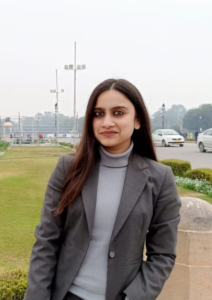Savings perform multiple functionalities. They help in accumulating assets, finance productive investments in both business and human capital, help smoothening consumption over the life-cycle of households, and safeguard households from various shocks and emergencies that might occur in the course of their life-cycles. Savings become even more prominent from the lens of low-income households (LIHs), as they are often employed in the informal sector with irregular incomes and often lack formal financial instruments to save or invest – facing a three-sided brunt (Collins, et al. 2009).
LIHs are vulnerable to a great extent as they are susceptible to various income shocks such as health shocks, loss of life of the primary income earner, or even monsoon failure for agricultural households. Though these risks are easily insurable, low-income households often lack access to suitable products and either dig into their stock of savings or take credit, generally from informal sources, to cope with the shock after it has occurred (Household Finance Committee 2017). At times, the households even resort to unhealthy coping mechanisms such as cutting down on meals (Azim Premji University 2021).
In such situations, it becomes important to have a substantial stock of savings to bear upfront costs associated with different risks and irregular consumption patterns. Studies have shown that low-income households do manage to maintain a surplus, but often lack formal and safe methods to save (Banerjee and Duflo 2007). The Government and policymakers have come up with different types of formal savings products to increase the uptake of savings accounts for households over the years. However, there are various barriers in terms of both the accessibility of such products and the usage of these products by households (Karlan, Ratan and Zinman 2014).
Therefore, it becomes important to study the different modes of savings by low-income households, the challenges that are faced by them, along with the reasons behind why these households choose certain products over others. It is also important to identify the factors that determine savings by low-income households and explore why the informal channels remain salient in providing services to these households.
To answer some of these questions in detail, BITS Pilani, Hyderabad team will present its research titled, “Urban low-income households’ savings: understanding issues and challenges in Indian context” at the 5th Dvara Research Conference on Household Finance. The study is based on a primary survey conducted in two urban districts of Telangana. This research presentation will help in analysing the gaps that remain in the savings literature of low-income households.
While it is important to understand the features of savings of low-income households, it is also essential to study who makes these decisions at the household level, who has the most say, if there are any differences in the reasons for which different household members save, and to what extent the household members trust each other’s ability to make such decisions. To throw light on such intra-household dynamics of consumption and saving and how they might, in turn, affect the level of savings by the households, Busara Center for Behavioral Economics will present its research titled, “From person to situation: understanding and testing household level financial behavior using a behavioral design approach”, using a two-phased novel approach to capture behavior. They use a participatory qualitative approach based on photo-elicitation, followed by rigorous interviews, and also real-life game simulation sessions that help them assess the approach taken by both spouses in real-time.
The conference will also feature a conversation with Misha Sharma, Dvara Research, and Sucharita Mukherjee, Kaleidofin, on the theme of intra-household finance and household savings to further unpack this complex topic.
Click here to register for the 5th Dvara Research Conference on Household Finance and learn more about these themes.
References
Azim Premji University. 2021. State of Working India 2021. https://cse.azimpremjiuniversity.edu.in/wp-content/uploads/2021/05/State_of_Working_India_2021-One_year_of_Covid-19.pdf.
Banerjee, Abhijit, and Esther Duflo. 2007. “The Economic Lives of the Poor.” Journal of Economic Perspectives 141-167.
Collins, Daryl, Jonathan Morduch, Stuart Rutherford, and Orlanda Ruthven. 2009. Portfolios of the Poor: How the World’s Poor Live on $2 a day. Princeton University Press.
Household Finance Committee. 2017. Indian Household Finance. Reserve Bank of India.
Karlan, Dean, Aishwarya Lakshmi Ratan, and Jonathan Zinman. 2014. “Savings by and for the poor: a research review and agenda.” Review of Income and Wealth 36-78.


